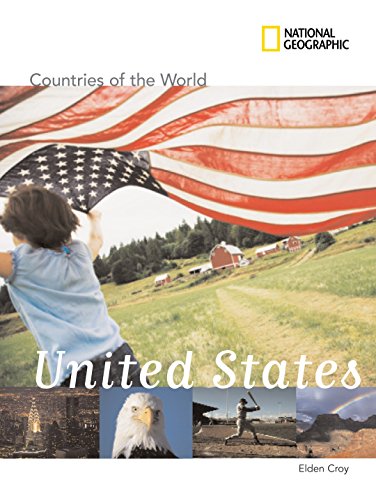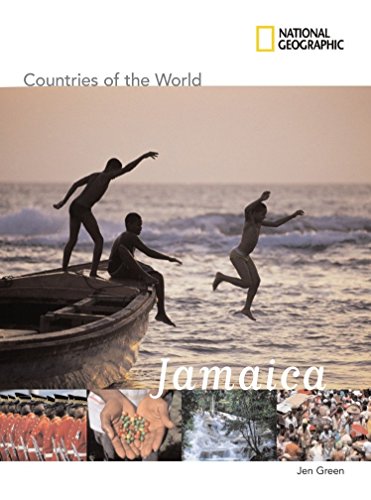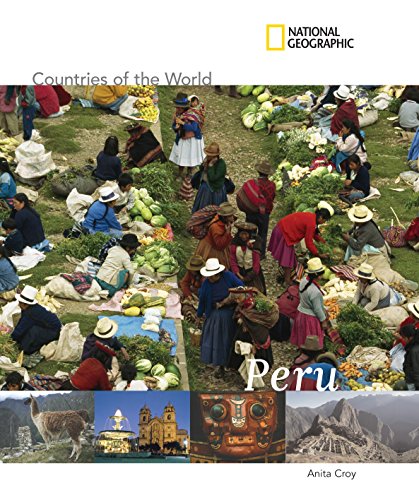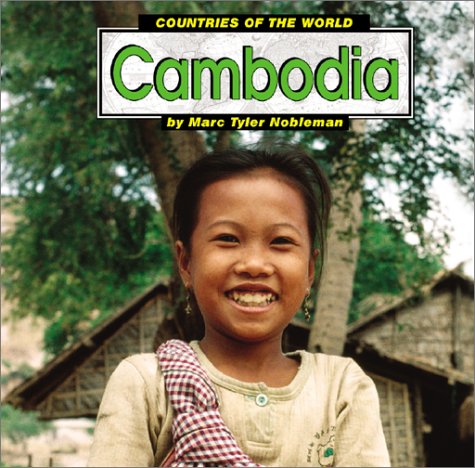-
National Geographic Countries of the World: Canada
Brian Williams
Paperback (National Geographic Children's Books, Aug. 11, 2009)National Geographic invites young readers to look north—to the world's second-largest country. Learn how Canada boasts more lakes than any other nation, and why its geological, climatic, and ecological variety make it a geographer's wonderland. Look back to a time when timber, minerals, and fresh water reserves initially attracted settlers to this great wilderness. Learn the background of Canada's formation in 1867 when three British colonies united to create a partially independent state of four provinces. Read how Canada achieved full independence in 1931. Experience a modern country self-sufficient in fossil fuels, whose rivers supply hydroelectric power to the big cities of Toronto, Montreal, and Vancouver. It's here that you'll meet most Canadians, with three-quarters of the population now living in such metropolitan areas. Within these cities, immigrants from all over the Earth have etched out their own communities, making Canadian society a modern mosaic of assimilated cultures. W
W
-
National Geographic Countries of the World: Egypt
Selina Wood
Paperback (National Geographic Children's Books, Aug. 11, 2009)National Geographic takes you to the ancient Land of the Pharaohs, where the shifting sands of time reveal one of history's great civilizations—and a key player in present-day Middle Eastern politics. Meet the ancient Egyptians who long ago pioneered irrigation agriculture, literacy, urban development, international trade, and the science of power politics. Visit modern Egypt and experience an Arabic-speaking, Islamic country with a rich history that also incorporates Christian, Greco-Roman and indigenous influences. Learn how Egypt's unique position between continents made it a vital hub of international trade, and how this land, which mainly lies in Africa, is uniquely connected to Asia by its easternmost point, the Sinai Peninsula. Let National Geographic give you the ultimate guide to the country's ever-shifting desert terrain, which is divided in two by the mythical river Nile. Learn how the annual flood of this great river sustained a stable agricultural society in the past. Then travel along the Nile Valley and its delta and chart the towns and centers of habitation where most Egyptians now make their homes. An enlightening, timeless journey of discovery awaits all curious young readers.National Geographic supports K-12 educators with ELA Common Core Resources.Visit www.natgeoed.org/commoncore for more information. W
W
-
National Geographic Countries of the World: Canada
Brian Williams
Library Binding (National Geographic Children's Books, April 10, 2007)National Geographic invites young readers to look North—to the world's second largest country. Learn how Canada boasts more lakes than any other country, and why its geological, climatic, and ecological variety make it a geographer's wonderland. Look back to a time when timber, minerals, and fresh water reserves initially attracted settlers to this great wilderness. Learn the background of Canada's formation in 1867 when three British colonies united to create a partially independent state of four provinces. Read how Canada achieved full independence in 1931. Experience a modern country self-sufficient in fossil fuels, whose rivers supply hydroelectric power to the big cities of Toronto, Montreal, and Vancouver. It's here that you'll meet most Canadians, with three-quarters of the population now living in such metropolitan areas. Within these cities, immigrants from all over the Earth have etched out their own communities, making Canadian society a modern mosaic of assimilated cultures.National Geographic supports K-12 educators with ELA Common Core Resources.Visit www.natgeoed.org/commoncore for more information. W
W
-
National Geographic Countries of the World: United States
Elden Croy
Library Binding (National Geographic Children's Books, Jan. 12, 2010)Welcome to the Land of the Free, Home of the Brave. Discover a land of stunning geographical contrast, from sea to shining sea. Visit the capital and home of U.S. government, Washington D.C., then travel north to the first capital, Philadelphia, where the constitution was signed. Find out why America has the most diverse population on Earth. Meet the upholsterer Betsy Ross, who stitched the first Stars and Stripes.National Geographic supports K-12 educators with ELA Common Core Resources.Visit www.natgeoed.org/commoncore for more information. X
X
-
Switzerland
Rebecca Rowell
Library Binding (Essential Library, Jan. 1, 2013)Provides information about Switzerland, with emphasis on its geography, culture, history, economy, and government.
-
National Geographic Countries of the World: Jamaica
Vicky Stone
Library Binding (National Geographic Children's Books, Sept. 9, 2008)Welcome to Jamaica, the cultural crossroads of the Caribbean. Venture into the heartland of Jamaica, and discover a verdant wonderland of tropical fauna and flora. Get in the groove of reggae, the rocksteady rhythm that conquered the music world. Retrace the island’s storied history of slave-trading, piracy, British Rule, and independence.National Geographic supports K-12 educators with ELA Common Core Resources.Visit www.natgeoed.org/commoncore for more information. Z
Z
-
South Africa
Christie R Ritter
Library Binding (Essential Library, Aug. 1, 2011)Provides information about South Africa, with emphasis on its geography, culture, history, economy, and government.
-
Norway
Carol Hand
Library Binding (Essential Library, Jan. 1, 2013)Provides information about Norway, with emphasis on its geography, culture, history, economy, and government.
-
National Geographic Countries of the World: Peru
Anita Croy
Library Binding (National Geographic Children's Books, April 10, 2007)Let the experts at National Geographic act as your guides to Peru, land of stunning beauty and endless contrast. Look and learn in wonder at the diversity of landscape within this surprising country: barren deserts, green oases, snowcapped peaks, high windswept plateaus, and deep valleys. Encounter the endless array of fauna and flora that thrives within these ecologically and climatically diverse regions: the animals and plants of the coastal regions, the offshore islands, the coastal plains, and the sierra. Learn of the country's rich yet divisive history; how Peru was once the center of a powerful and extensive empire ruled by the Inca. Peer over the shoulders of experts on Peruvian archaeological sites and examine the treasures that yield the secrets of the Inca, one of history's most advanced civilizations. Learn how the Spanish conquered Peru in the 16th century, coveting its rich resources of precious metals, and how centuries of colonization would later leave a powerful cultural stamp on this South American nation. Trace the course of Spanish rule, which ended in the early 19th century, and resulted in a divided society in which a wealthy elite of largely Spanish descent has long dominated Peru's larger population of Native American and mixed-race ethnicity. Meet the people of modern Peru and witness a fast-changing society, striving to adapt to the global trend towards large-scale urbanization, with city dwellers now making up 74 percent of a once mainly rural population.National Geographic supports K-12 educators with ELA Common Core Resources.Visit www.natgeoed.org/commoncore for more information. W
W


